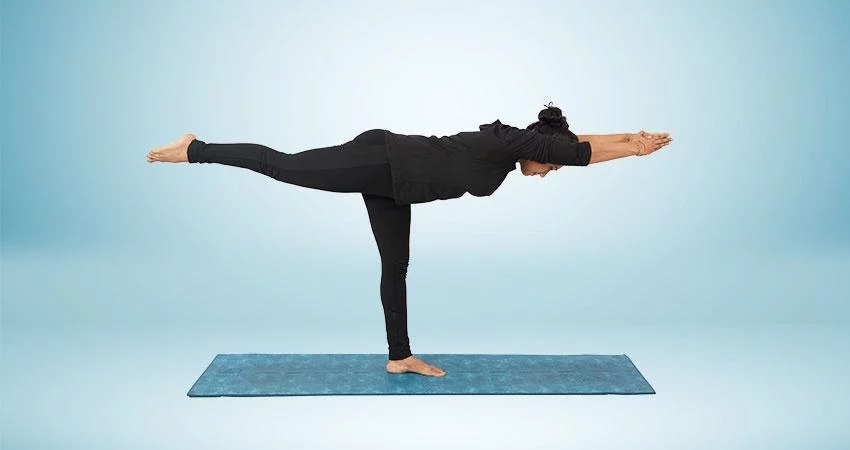Garudasana (Eagle Pose) is an intermediate asana that falls under the balancing category. If you break down Eagle Pose, it's not as challenging as it looks. Although balance is a challenge, Eagle Pose is less unstable than most standing poses on one leg because the limbs are drawn into the body and the center of gravity is low due to the bent knees. It also tones the inner thighs and glutes, which are challenging to reach. The pose is also a fantastic shoulder stretch. Garudasana stimulates the Swadhishtana Chakra and Muladhara Chakra.
Steps to do Eagle Pose / Garudasana
- Stand in Tadasana.
- Exhale, Squat a little, inhale, lift the right leg up and wrap it around the left.
- Place the right hand in front, take the left hand from below and wrap around the right hand, palms closer and facing each other.
- Keep your spine straight, gaze at a point.
- Hold the posture for a while with normal breath.
- Release the right leg, relax the hands and stand in Tadasana.
- Repeat on the other side.
Tips for beginners
- A good alignment is crucial.
- Make sure your thighs, arms, and hands are all in line. Since the Eagle Pose is typically performed with a straight back, having a rounded back is thought to be less advantageous.
- Preparatory poses for Garudasana are Marjari Asana, Gomukhasana, Prasarita Padottanasana.
Benefits
- Improves concentration.
- Strengthens muscles and loosens up joints of shoulders, arms and legs.
Watch out for
- People with knee, ankle and shoulder injury must avoid it.
- Also people with low blood pressure and vertigo shouldn’t practise.
Variations
- You can do this pose on the chair.
- You can take the support of the wall in case you have trouble balancing.
- Garudasana can be done in supine position as a beginner level.








